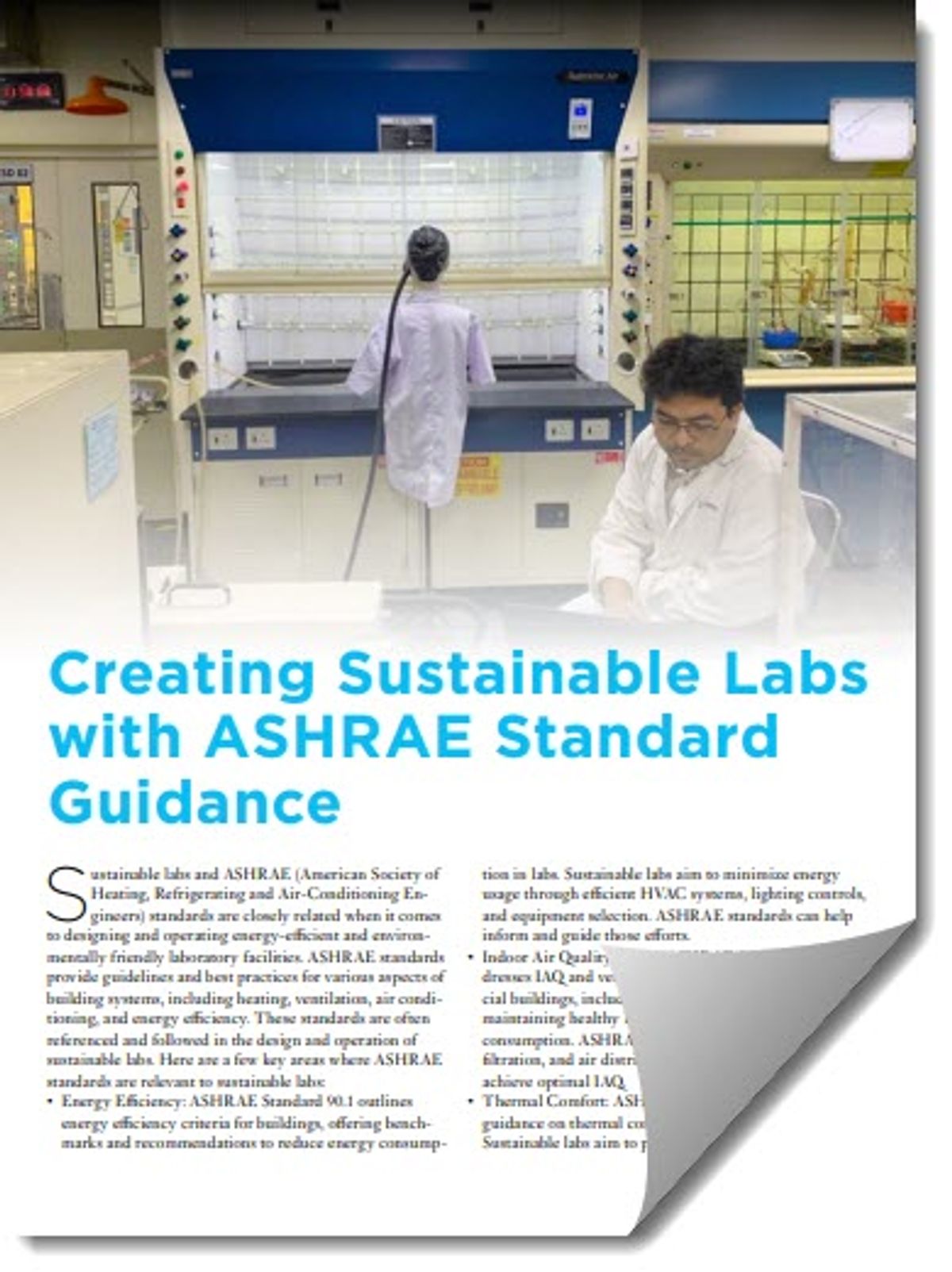There is a growing concern among researchers about the sustainability of scientific operations, as it can generate large quantities of air, water, and land pollution, harming both the environment and lab personnel. This awareness has led to a concerted effort within the scientific community to develop more sustainable practices, with a focus on minimizing the ecological footprint of research and ensuring the health and safety of those working in these environments. Standards, such as those provided by the American Society of Heating, Refrigerating, and Air-Conditioning Engineers (ASHRAE), are instrumental in guiding labs toward more sustainable practices, with a focus on energy and water conservation, indoor air quality, and effective ventilation strategies.

ASHRAE has recently introduced Standard 241-2023, which provides new guidelines for controlling infectious aerosols in labs and commercial buildings by increasing air exchange rates and adding outside air. It also recognizes the implications of such measures on a building’s energy load and encourages the exploration of advanced technologies, like ductless filtering products, so labs can meet these enhanced ventilation requirements without compromising on safety or sustainability.
Download this whitepaper to learn about the role of ASHRAE standards in enhancing lab sustainability, including:
- Insights into how ASHRAE standards guide labs towards enhanced sustainability
- A detailed review of ASHRAE Standard 241-2023, and other standards, for sustainable lab design and operations
- Effective strategies for improving indoor air quality with ductless filtering technology
